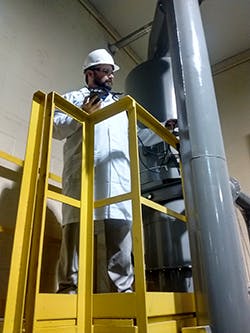Aerodyne Environmental Introduces Dust Efficiency Clinic
Aerodyne Environmental offers system evaluation services through its Dust Efficiency Clinic.
Aerodyne Environmental now offers dust collection system operators a range of system evaluation services through its Dust Efficiency Clinic. These services can be tailored to boost the efficiency of an operation’s dust collection system, decrease maintenance costs, prolong equipment life or improve compliance, according to the company.“There’s much more to dust collection than installing equipment like cyclones and baghouses,” says Dan Navicky, an applications engineer at Aerodyne. “Every facility represents a unique set of challenges because each has a different set of applications, operating conditions and dust types.”
Navicky describes the dust collection problems that have led some system operators to turn to Aerodyne recently, saying, “We consulted with one company that had installed a hood to prevent fugitive dust from escaping, but the hood was located too close to their process and the airflow was too high, so it was actually picking up product and sending it to waste.”
He adds, “We also worked with another company that had piles of dust around their facility in a combustible process. This could have led to a fine for housekeeping if there had been an OSHA inspection. Another customer’s baghouse was clogging up due to moisture that was coming in through the cleaning system. We advised them to install a cyclone prefilter to minimize the amount of dust reaching the baghouse filters, which extended bag life while increasing dust removal.”
System evaluations may include:
- A safety assessment: An Aerodyne dust collection specialist will review and inspect the facility’s equipment, installation, controls, and protective devices. This assessment evaluates the facility’s hoods, ductwork, explosion vents, housekeeping, and other related areas. The assessment report will include suggestions for areas of improvement so that the dust collection process will comply with the latest NFPA standards. This safety assessment is recommended as a preliminary step before conducting a Dust Hazard Analysis.
- A collection assessment: This assessment starts with gathering physical data on system airflow, temperature, static pressure, etc., in addition to a review of the various parts of the system, including the dust collector, fans, dampers, ductwork, hoods, etc. It includes recommendations for changes and operating suggestions to improve system performance and removal efficiency and decrease maintenance, filter replacement frequency, etc.
Aerodyne also offers several other related services through its Dust Efficiency Clinic:
- Dust Hazard Analysis
- Process Hazard Analysis (PHA)
- Filter replacement and dust collection maintenance
- System design help for used equipment
- Dust testing (particle size analysis and/or explosiveness)
For more information, visit: www.dustcollectorhq.com

